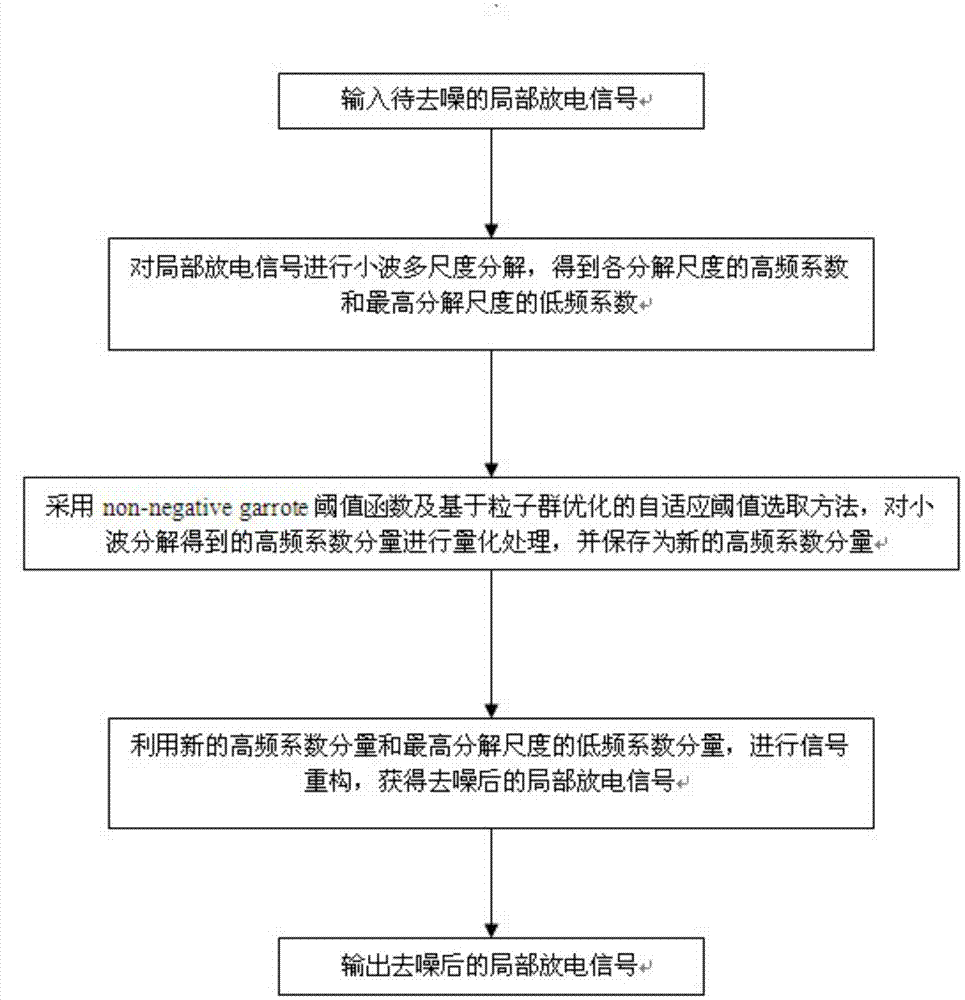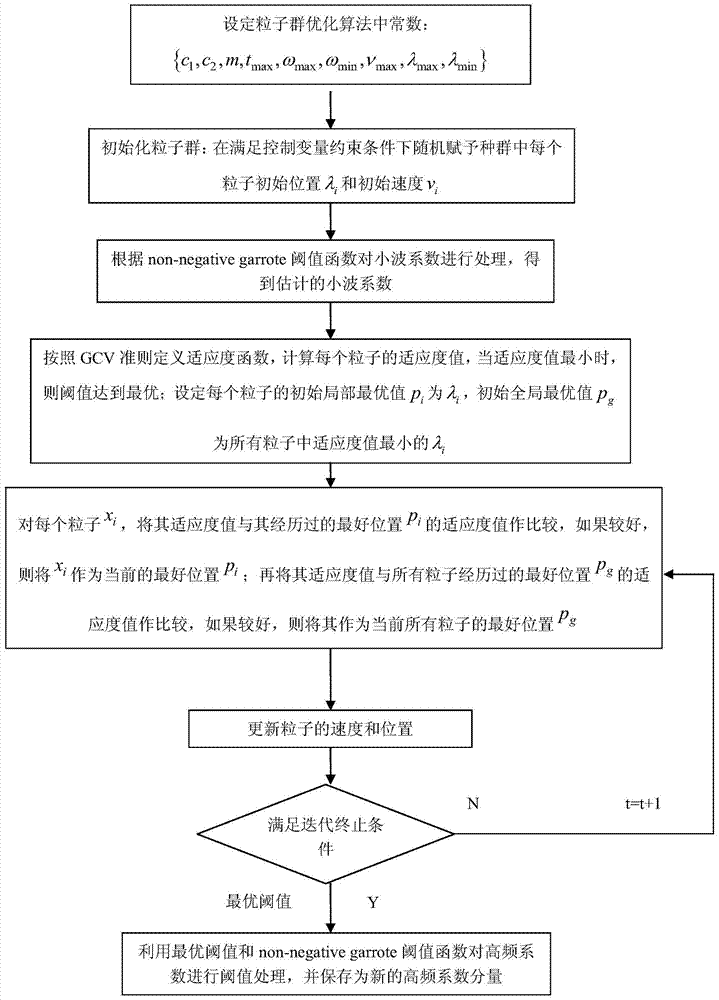Partial discharge signal denoising method based on wavelet adaptive threshold
A wavelet self-adaptive, discharge signal technology, applied in the direction of testing dielectric strength, etc., can solve the problem of signal containing noise, achieve good effect and reduce distortion
- Summary
- Abstract
- Description
- Claims
- Application Information
AI Technical Summary
Problems solved by technology
Method used
Image
Examples
Embodiment
[0048] In this embodiment, a partial discharge signal denoising method based on wavelet adaptive threshold, see figure 1 , including the following steps:
[0049] S1. Input the partial discharge signal to be denoised, see Figure 5 ;
[0050] S2. Perform wavelet multi-scale decomposition on the partial discharge signal to obtain the high-frequency coefficients of each decomposition scale and the low-frequency coefficient of the highest decomposition scale;
[0051] S3. Using a non-negative garrote threshold function and an adaptive threshold selection method based on particle swarm optimization, perform quantization processing on the high-frequency coefficient components obtained in step S2 to remove noise components, and save them as new high-frequency coefficient components; thus, By establishing the generalized cross-validation criterion (GCV), combined with the particle swarm optimization algorithm, the wavelet coefficient threshold adaptive selection is realized without...
PUM
 Login to View More
Login to View More Abstract
Description
Claims
Application Information
 Login to View More
Login to View More - R&D
- Intellectual Property
- Life Sciences
- Materials
- Tech Scout
- Unparalleled Data Quality
- Higher Quality Content
- 60% Fewer Hallucinations
Browse by: Latest US Patents, China's latest patents, Technical Efficacy Thesaurus, Application Domain, Technology Topic, Popular Technical Reports.
© 2025 PatSnap. All rights reserved.Legal|Privacy policy|Modern Slavery Act Transparency Statement|Sitemap|About US| Contact US: help@patsnap.com



